Iran Hostage Crisis Ended 40 Years Ago
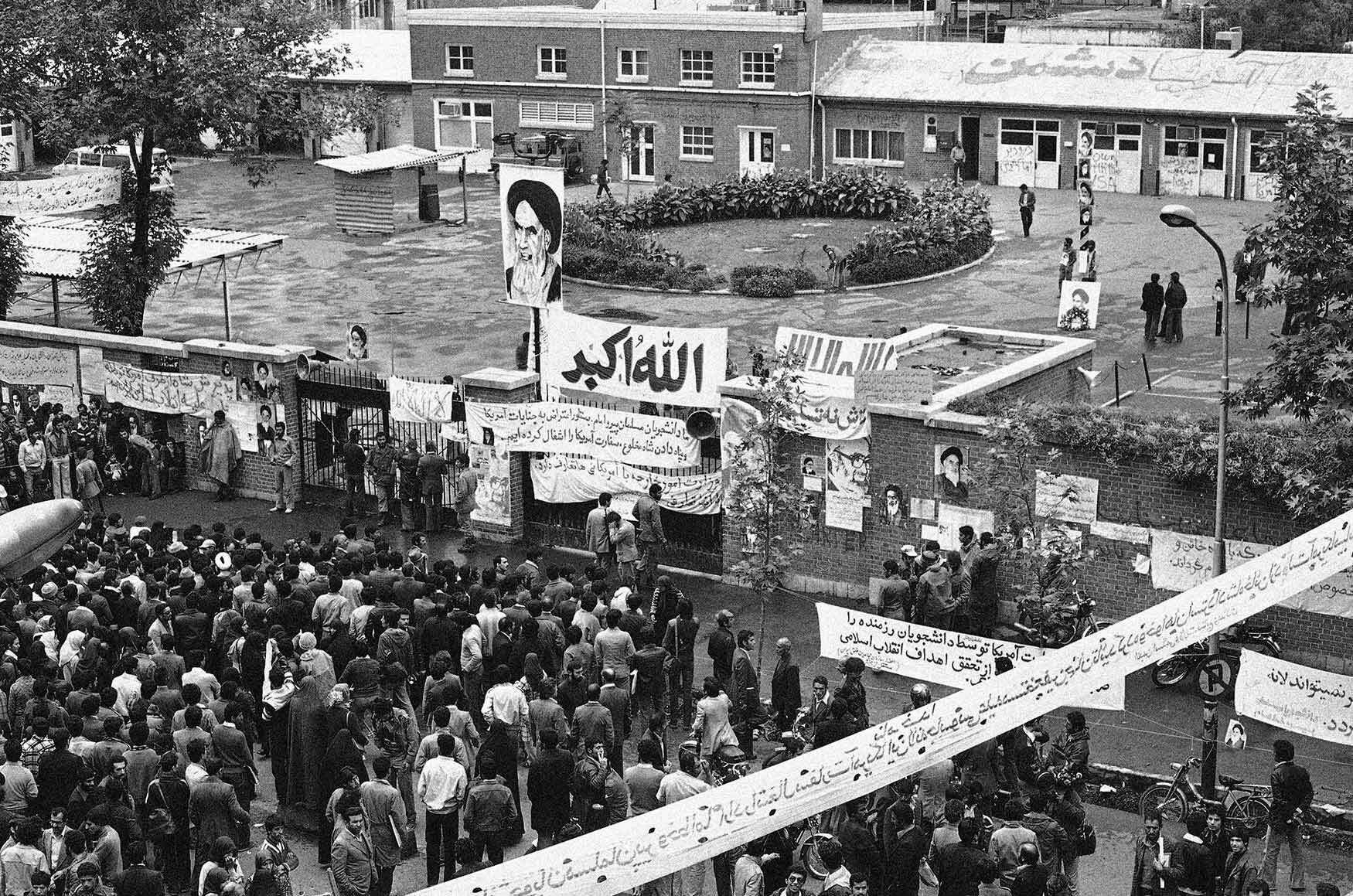
It’s been 40 years since 52 American hostages were held for 444 days after the U.S. Embassy in Tehran was seized by revolutionary Iranian students.
The impetus for the takeover was the exiled Shah of Iran’s entry into the U.S. The hostage crisis brought Ayatollah Khomeini into power, and would eventually cost U.S. President Jimmy Carter his reelection bid in the 1980 Presidential Election.
The majority of hostages were released the day Ronald Reagan was sworn in as president.
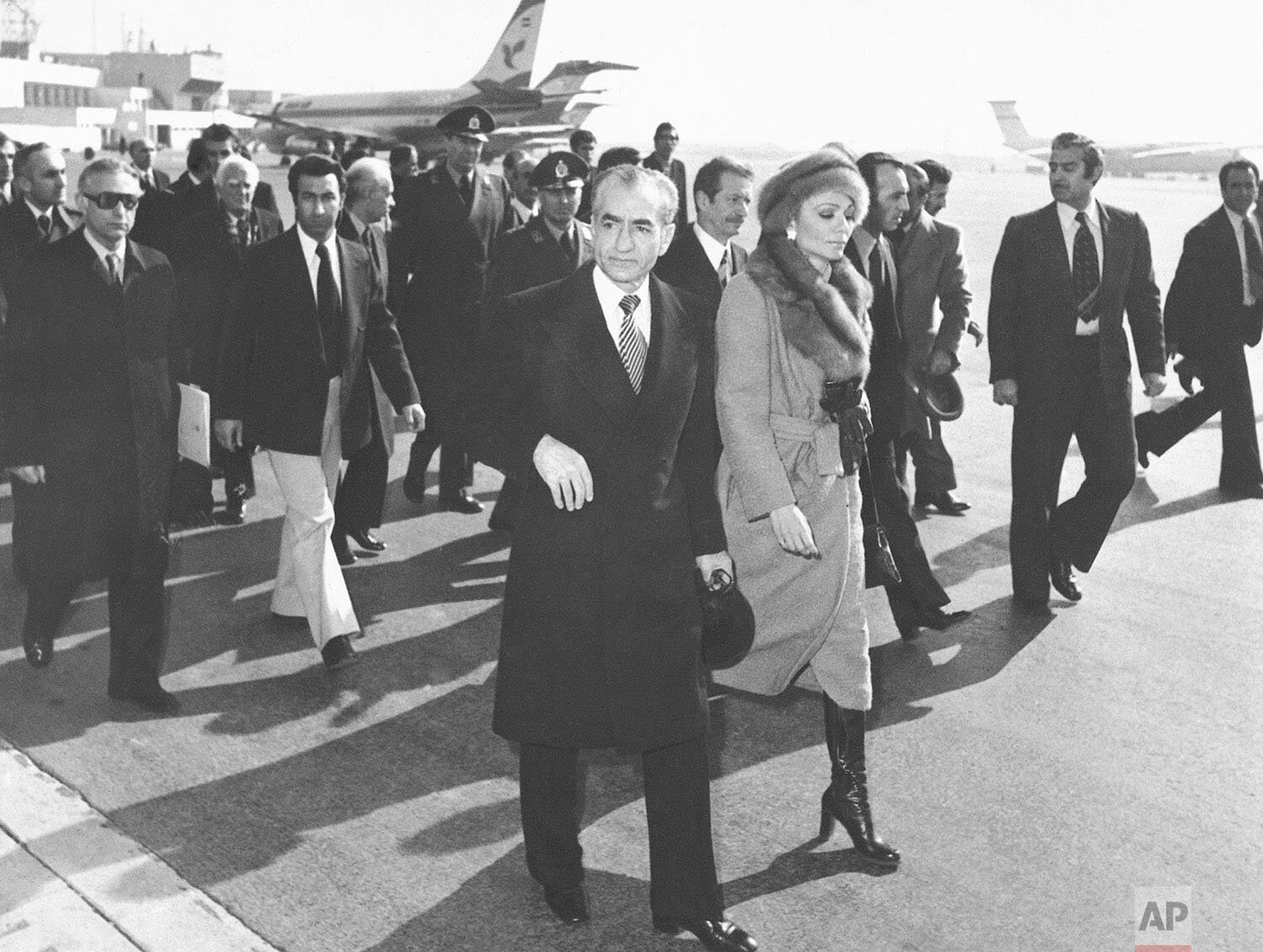
In this Jan. 16, 1979 photo, Shah Mohammad Reza Pahlavi and Empress Farah walk on the tarmac at Mehrabad Airport in Tehran, Iran, to board a plane to leave the country. Forty years ago, Iran's ruling shah left his nation for the last time and an Islamic Revolution overthrew the vestiges of his caretaker government. The effects of the 1979 revolution, including the takeover of the U.S. Embassy in Tehran and ensuing hostage crisis, reverberate through decades of tense relations between Iran and America. (AP Photo)
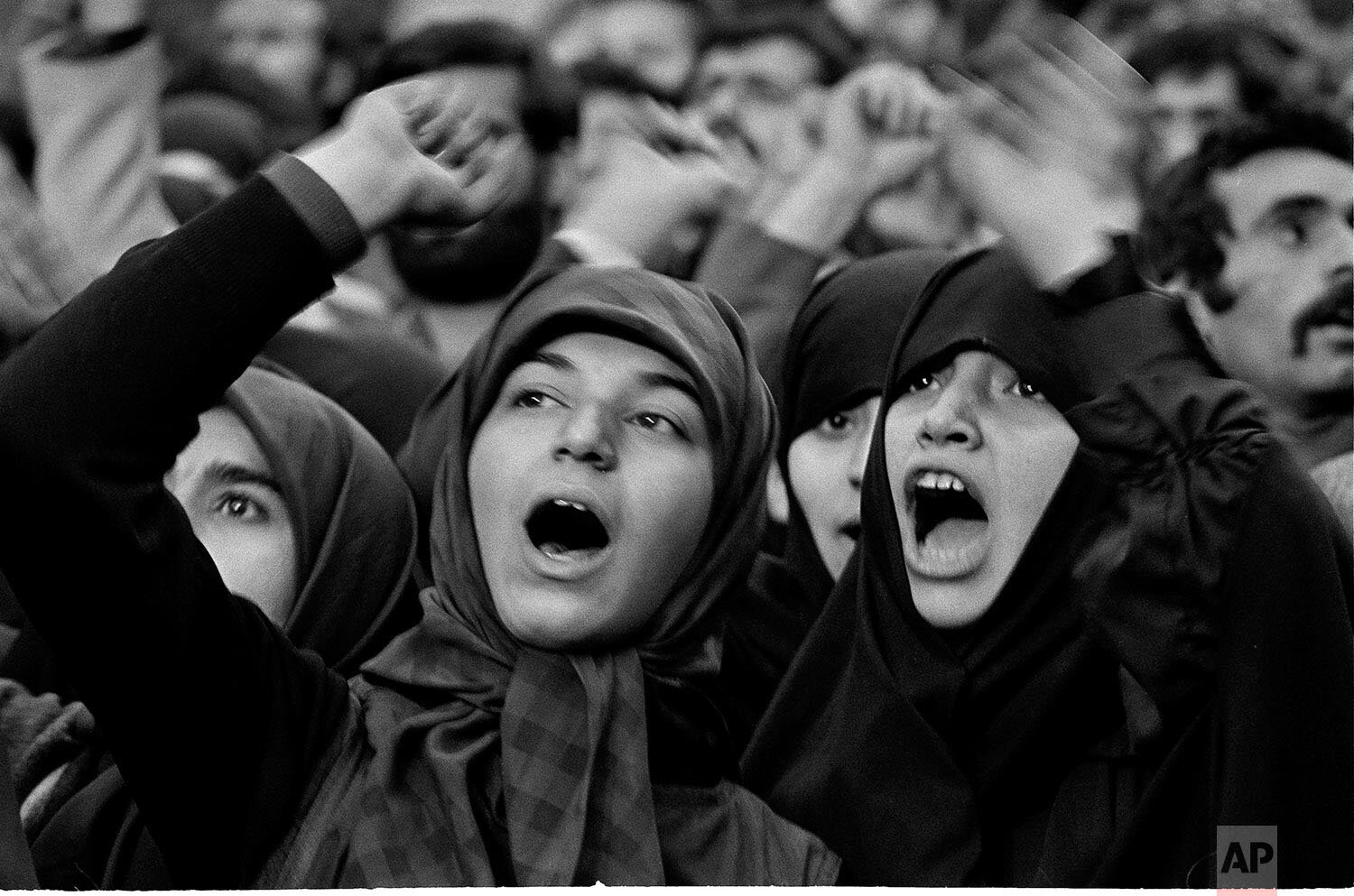
Iranian girls shout demands for President Carter to return the former Shah of Iran to Iran for trial during daily demonstrations outside the U.S. Embassy in Tehran, Nov. 24, 1979, where 50 Americans are being held hostage. (AP Photo/Herve Merliac)
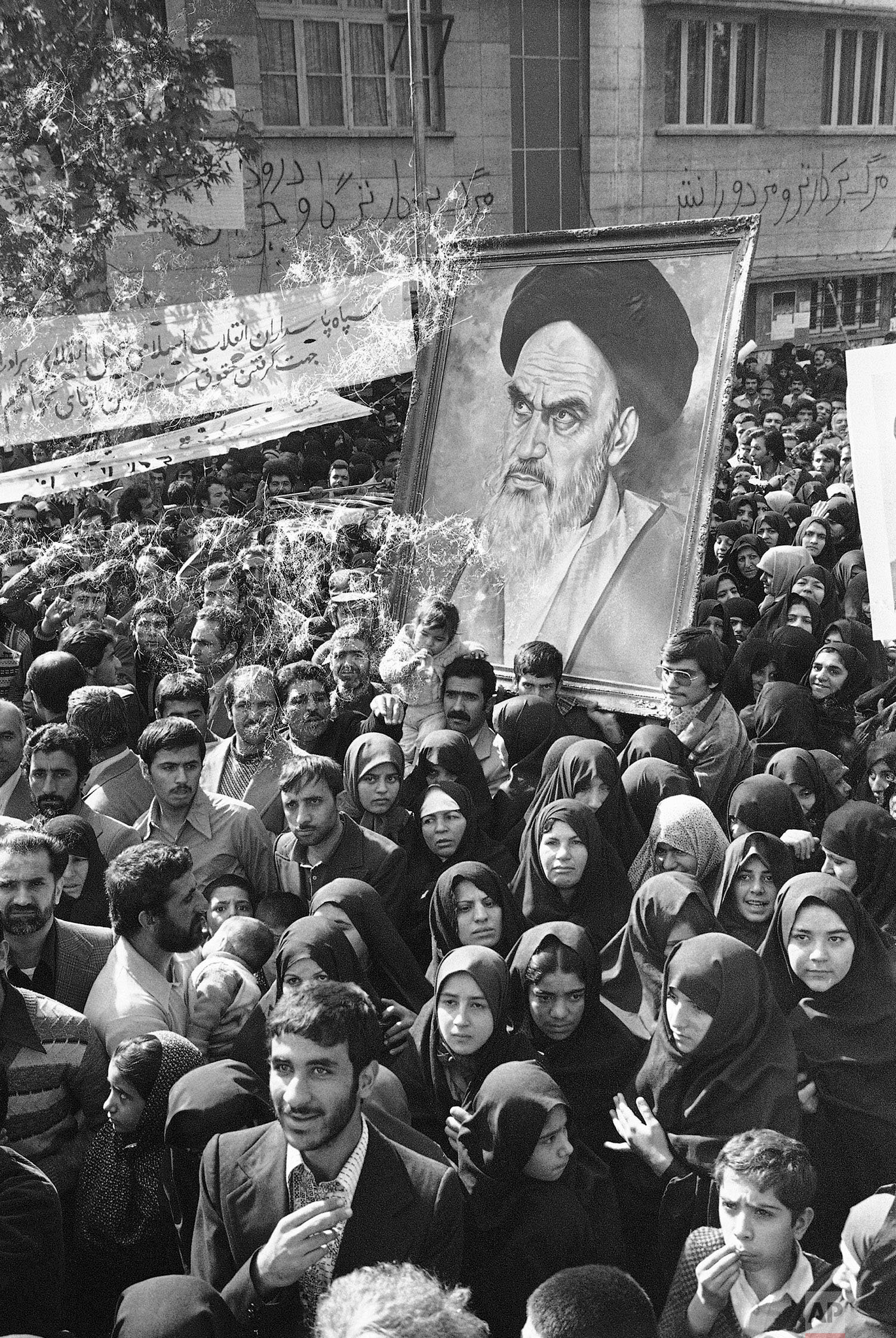
Many thousands of Iranian women clad in their traditional "chador" joined their men-folk on a march towards the United States Embassy in Tehran, Iran, on Wednesday, Nov. 21, 1979. The embassy is already under occupation by Khomeini soldiers and holding some 50 American citizen hostages. They carried larger than life size pictured of their leader Ayatollah Ruhollah Khomeini. (AP Photo/Sayad)
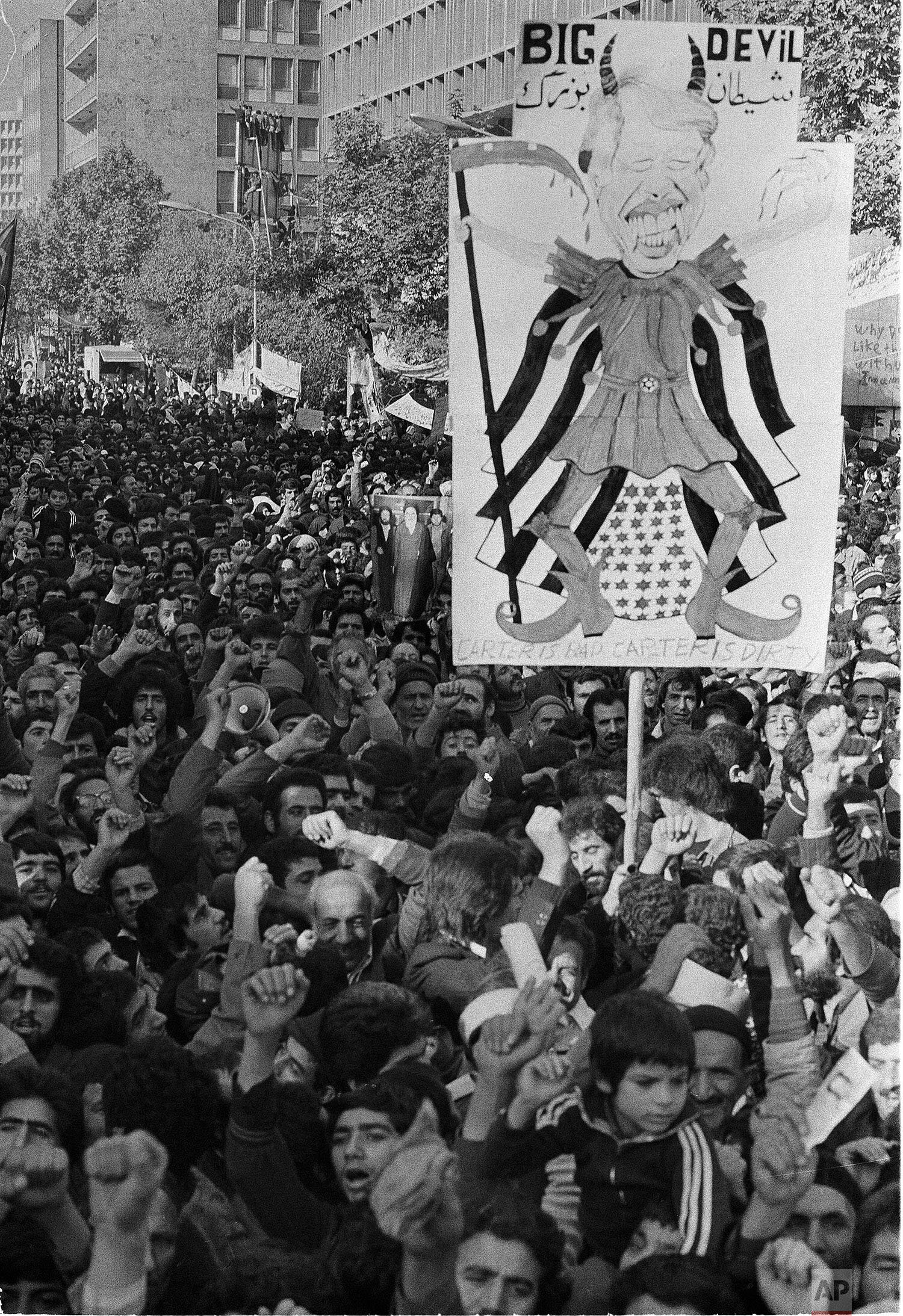
A banner depicting President Carter as a devil is carried by Iranian crowds during an anti-American march in Tehran, Nov. 21, 1979. (AP Photo/Mohammad Sayad)
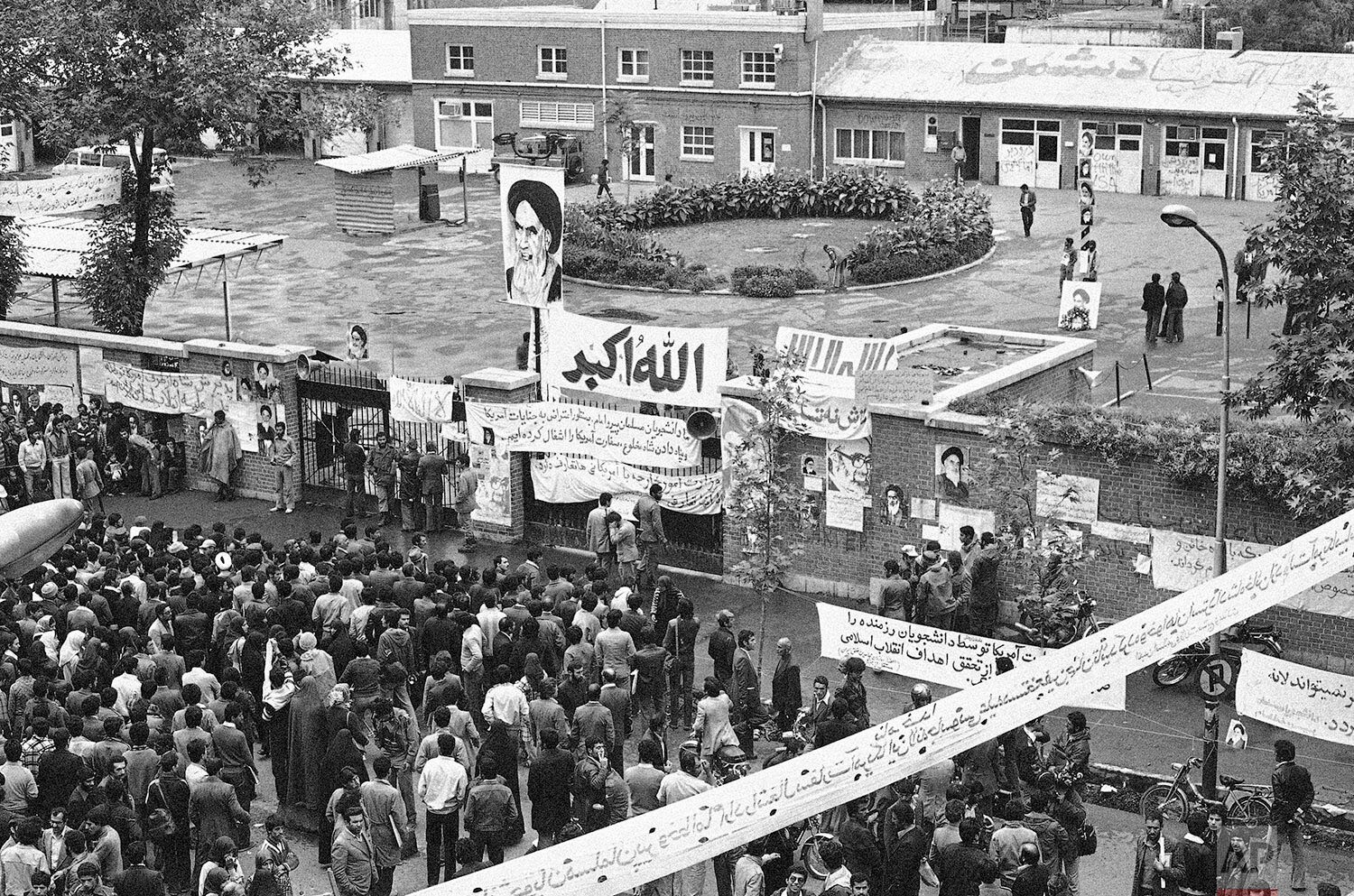
Iranian people gather before the entrance of the United States Embassy compound in Tehran, Iran Nov. 6, 1979, on the third day of the occupation of the building. Iranian students took over the Embassy on Sunday and are still holding the staff hostage against the deportation of the former Shah of Iran from the United States. (AP Photo)
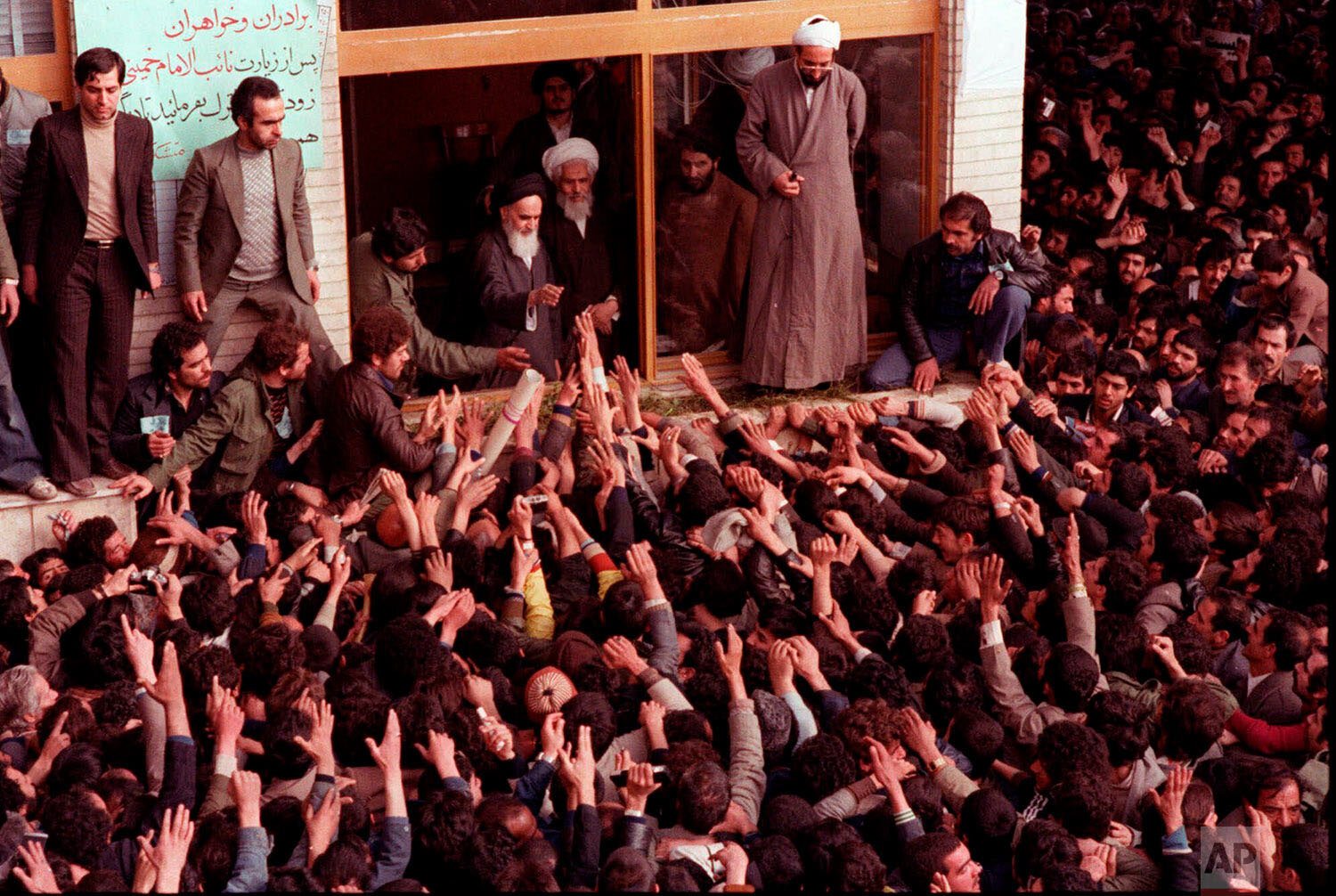
In this Feb. 2, 1979 photo, Ayatollah Ruhollah Khomeini, center, is greeted by supporters in Tehran, Iran. (AP Photo)
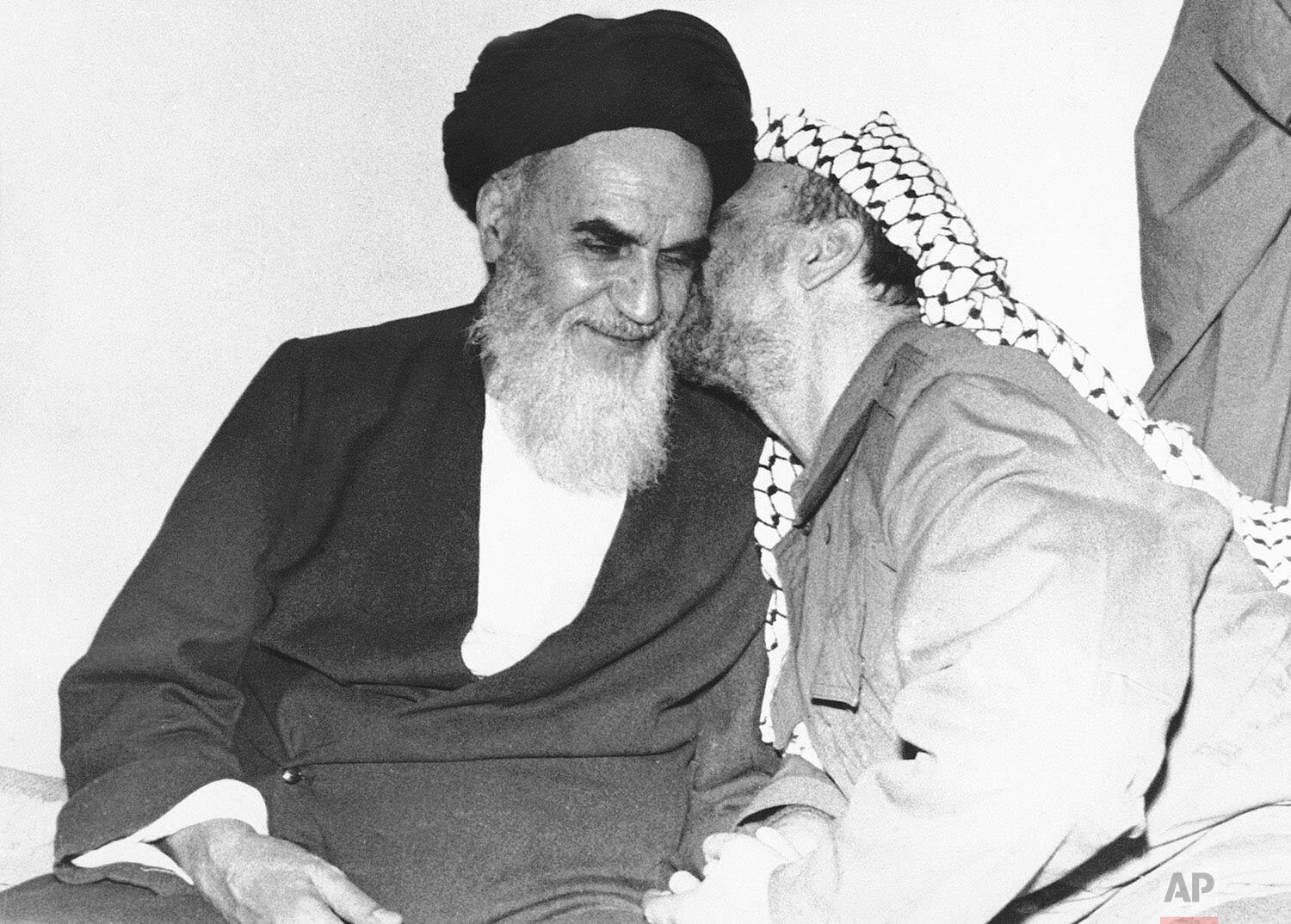
In this Feb. 18, 1979 photo, Palestinian Liberation Organization leader Yasser Arafat, right, kisses Ayatollah Ruhollah Khomeini, left, during a meeting in Tehran, Iran. (AP Photo)
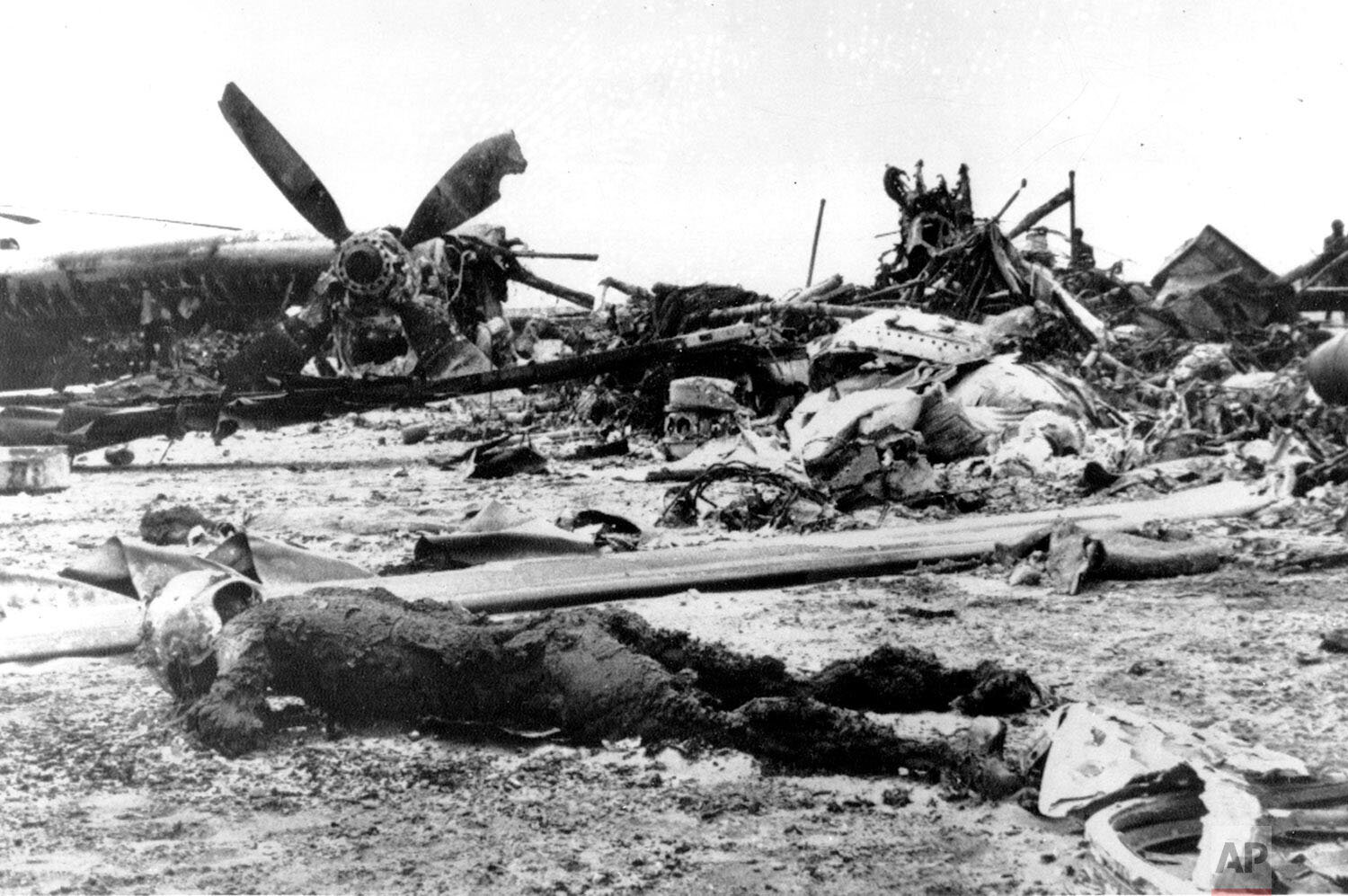
A charred body lies within the scorched wreckage of an American C-130 Cargo aircraft in the Iranian desert of Dasht-E-Kavir, approximately 500 kilometers from Tehran, on April 27, 1980. The mission to free 50 American hostages from the U.S. Embassy in Tehran, Iran was aborted due to equipment failure. The plane collided with a U.S. helicopter and eight servicemen were killed. (AP Photo)
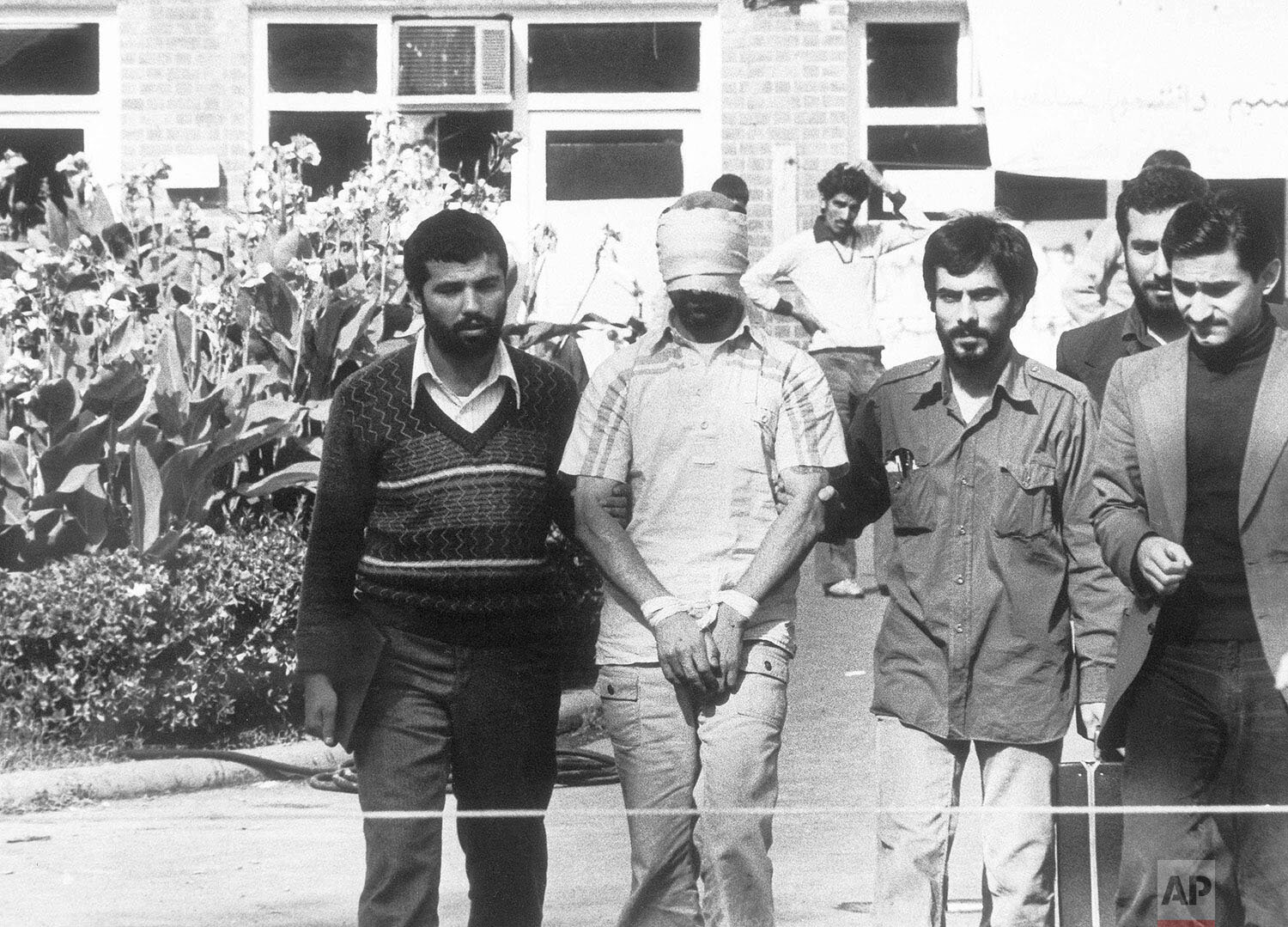
Blindfolded and hands bound, one of the hostages held at the U. S. Embassy in Tehran, Iran is shown to the crowd by Iranian students on Nov. 8, 1979. (AP Photo)
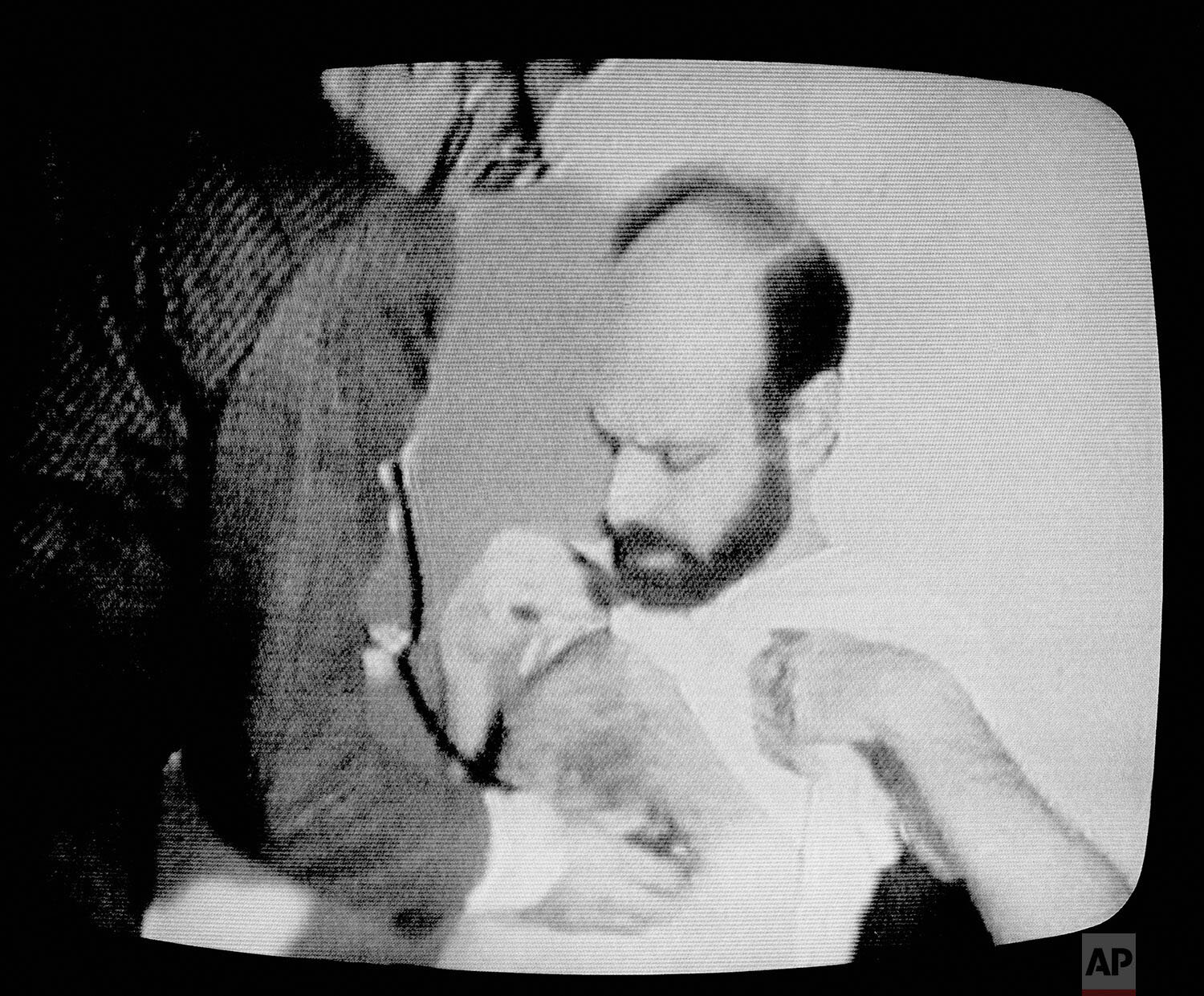
Barry Rosen, one of the American hostages being held in Iran, is shown on a video screen being treated by an Iranian Red Crescent doctor in the occupied U.S. Embassy in this film shot by the militants holding the hostages, March, 1980. The video was made available to NBC Nightly News via Greek television. (AP Photo/Carlos Rene Perez)
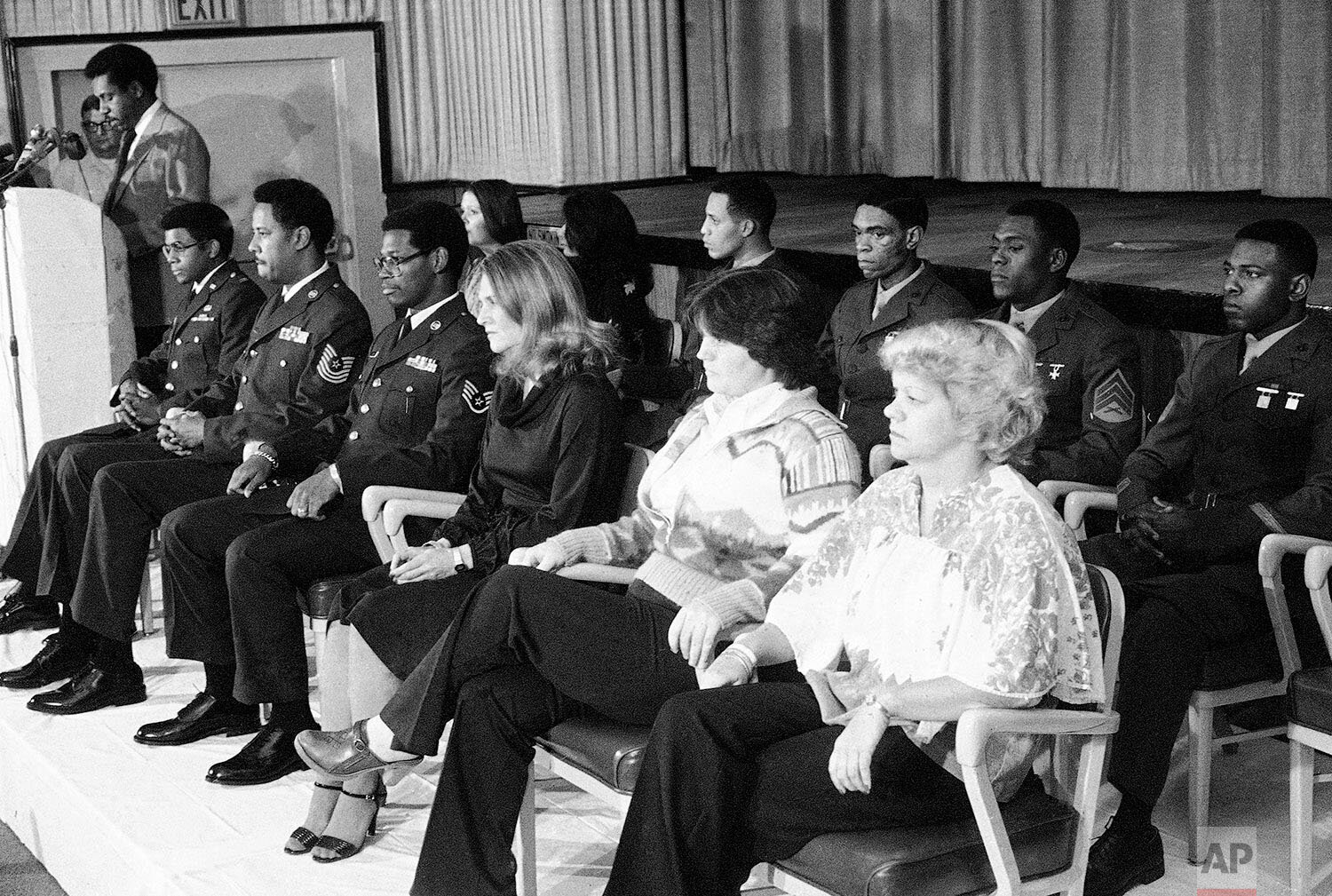
Thirteen American freed hostages from the U.S. embassy in Tehran on Nov. 21, 1979 seen in the theater of the local U.S. Air Force hospital at Wiesbaden, West Germany appearing before journalists. One of them, Lloyd Rollins (far left in rear of the desk) reads a statement by their former captors. Others in photo from left, (front row) are Terry Robinson. Joseph Vincent, James Hughes, Joan Walsh, Kathy Gross and Anne Johnson. Back row from left: Terry Redford, Liz Montagne, Wesely Williams, William Quarles, Ladell Maples and David Walker. The former hostages will be flown back home Thursday. (AP Photo/Kurt Strumpf)
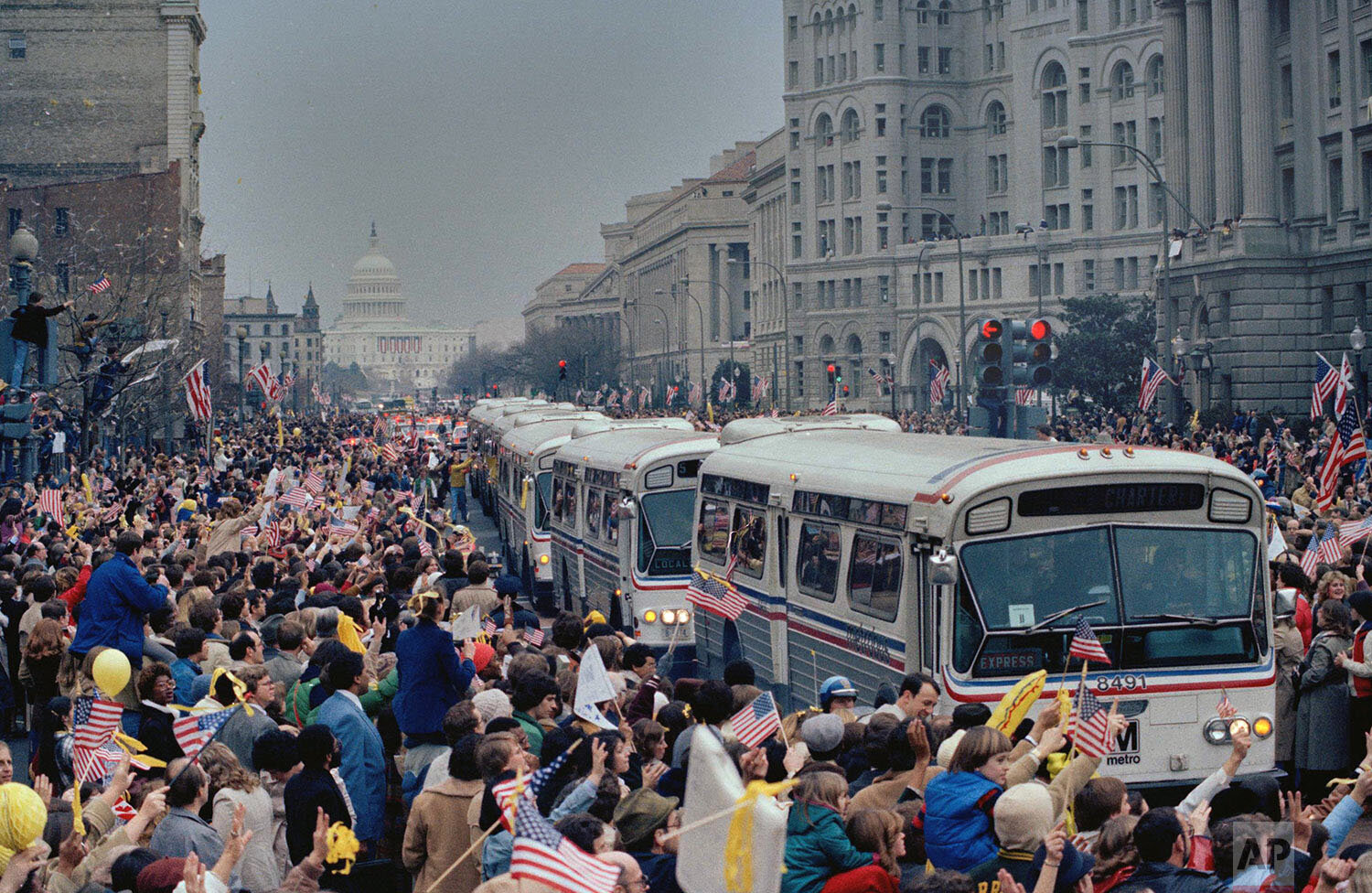
The caravan of buses carrying the former hostages and their relatives makes its way through the crowd on hand to greet them on Washington's Pennsylvania Avenue, Jan. 27, 1981. The 52 Americans were held hostage in Iran for 444 days after their capture at the U.S. Embassy in Tehran. (AP Photo)
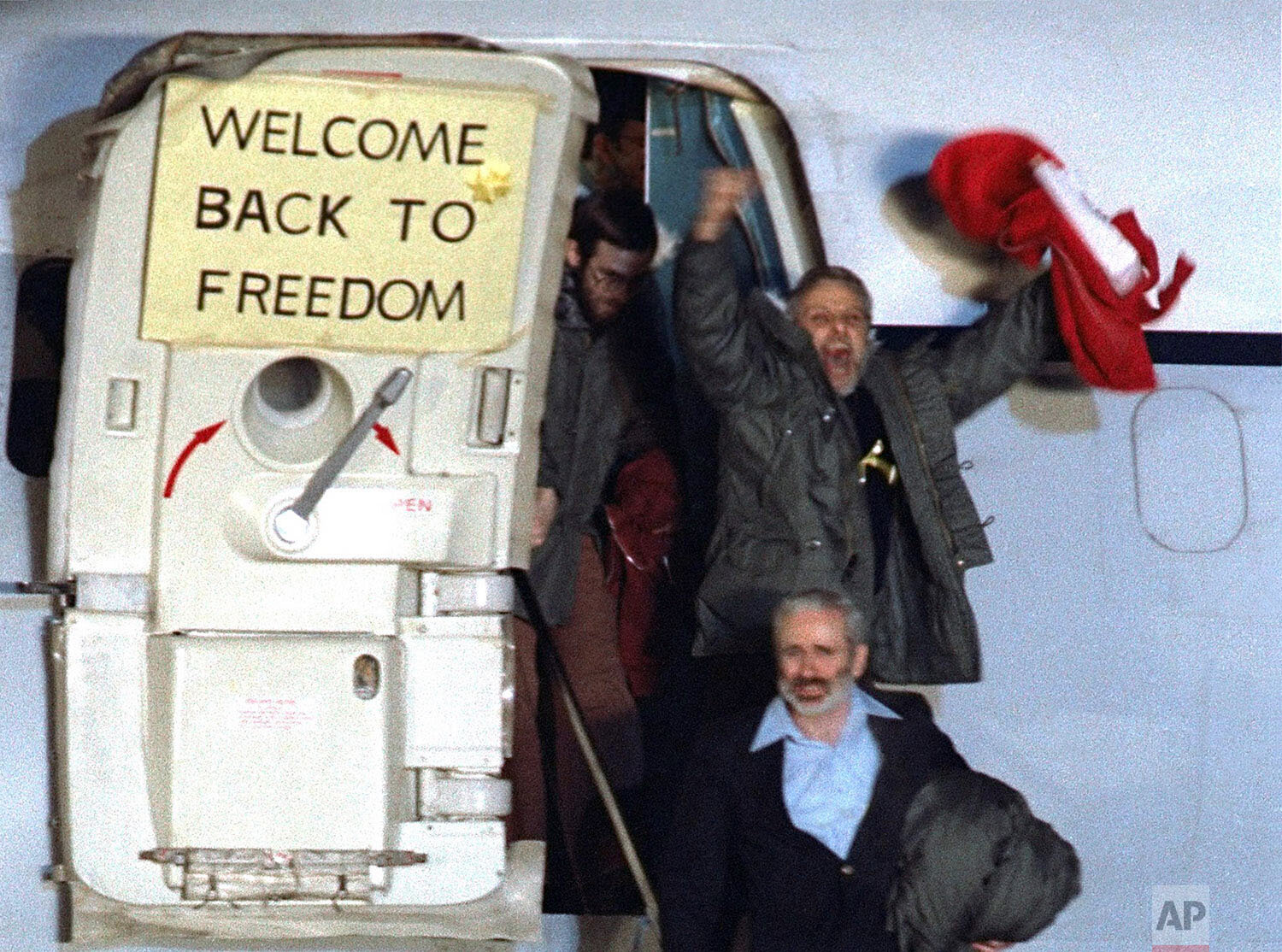
David Roeder shouts and waves as he arrives at Rhein-Main U.S. Air Force base in Frankfurt, West Germany from Algeria on January 21, 1981. He was among 52 Americans held hostage in Iran for 444 days after their capture at the U.S. Embassy in Tehran. (AP Photo)

Former US President Jimmy Carter, who had negotiated for the hostages release right up to the last hours of his Presidency, lifts his arm to the crowd, while putting his other hand around the shoulders of a former hostage in Iran, believed to be Bruce Laingen, at US AIR Force Hospital in Wiesbaden, Germany, Wednesday, January 21, 1981. The United States had agreed to unfreeze Iran's assets in exchange for the hostages freedom. (AP Photo/Mark Goecks)
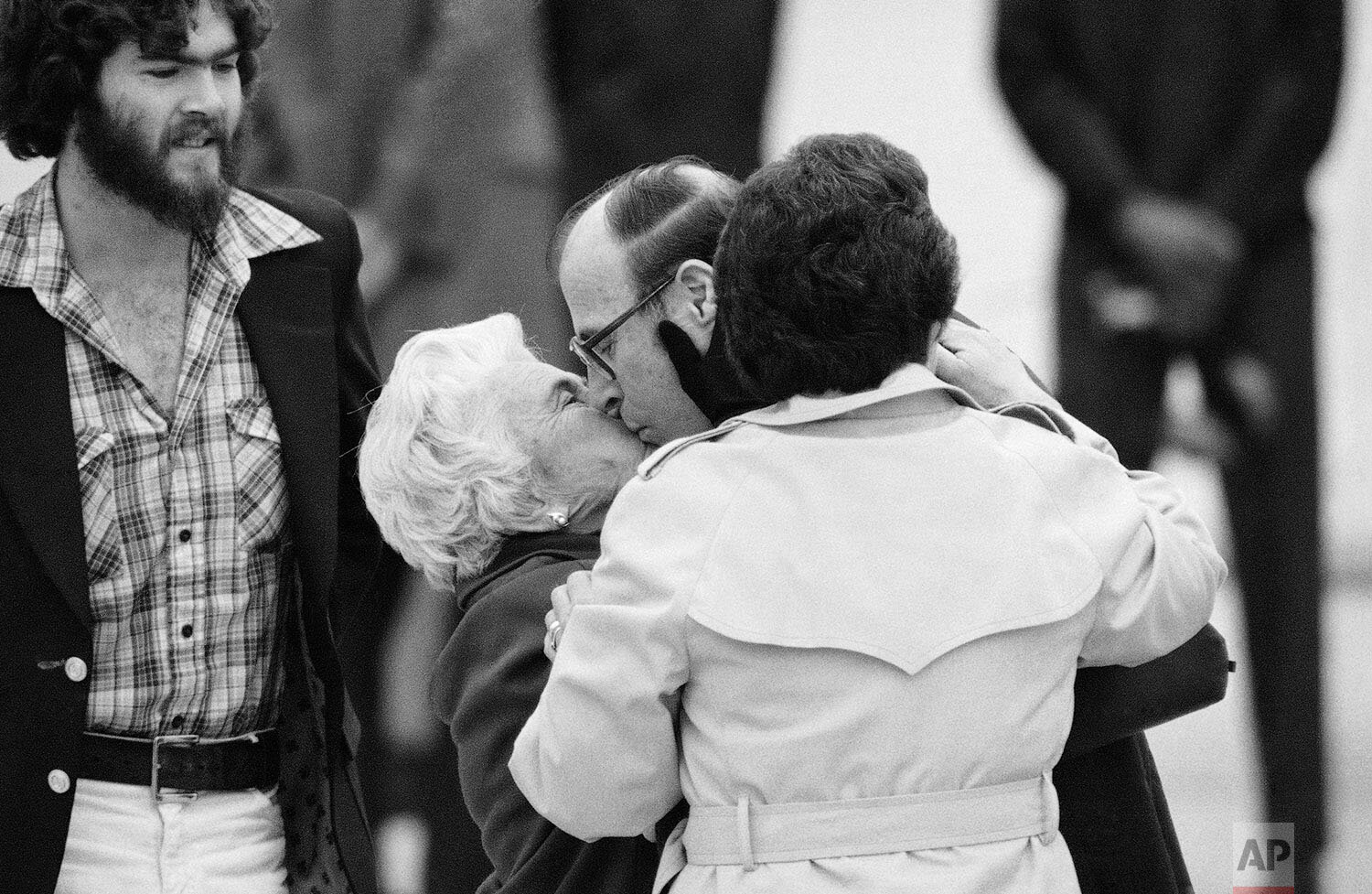
Former hostage Richard Morefield gets a kiss from his mother, Maria Morefield, as he arrives at Andrews Air Force Base, Md., Jan. 27, 1981 for the official welcome in Washington for the freed hostages. (AP Photo)
